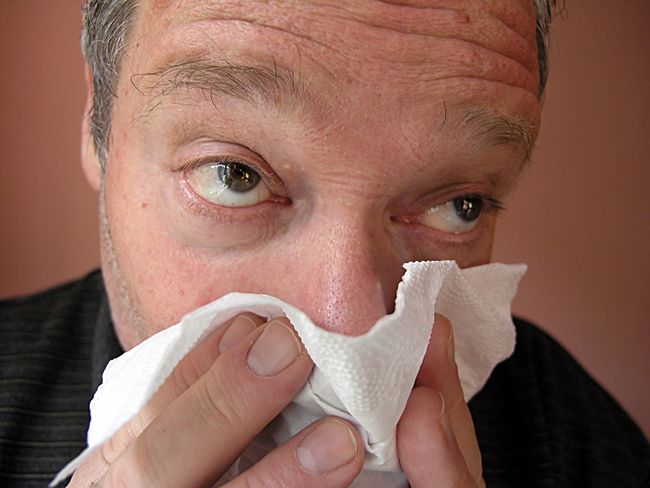Not Just the Flu: Indoor Allergies Running Very High

This article was provided by AccuWeather.com.
In the midst of a widespread and deadly flu epidemic, millions of people in the U.S. are suffering from indoor allergies.
Very high to extreme levels of indoor allergens are occurring across the entire U.S., because houses are closed up during the winter. This allows allergens to build up inside. The three main offending indoor allergens are dust mites, pet dander and mold.
For the most part, dust is not as much of a problem across cold, dry areas of the northern tier of the nation this time of the year.
SEE ALSO: Aches and Pain Forecast Cold and Flu Forecast
"Areas with low humidity and where temperatures are in the 20s or lower, dust mites are usually killed off by mid-January," David Shulan, M.D., from Albany, N.Y., said.
However, dust can still be a problem across warm or humid areas of the country, including much of the South, portions of Plains and Southwest. For instance, Tampa, Fla., is enduring extreme indoor allergen levels.
Sign up for the Live Science daily newsletter now
Get the world’s most fascinating discoveries delivered straight to your inbox.
"If you are allergic to pets, this is going to be a bad time of year," Shulan added.
Depending on the house, mold spores can also build up as homes are sealed tight in the winter. This depends on how humid a house is kept, and there may be trouble spots, including bathrooms and crawl spaces.
How to Reduce Indoor Allergy Suffering There are many steps people can take to reduce indoor allergy symptoms.
Neil Kao, M.D., from Greenville, S.C., advises the following: "Educate yourself. Reduce exposure to the allergen. Then, you may need to talk to the doctor about how to optimally take over the counter medication or get a prescription."
Reduce Exposure to the Allergen A key to fighting indoor allergy symptoms is to reduce the exposure to allergens. There are many ways to make a home a harsh environment for allergens.
Kao suggested buying a hygrometer, an instrument used to measure the moisture content in the environment. Keeping the humidity less than 40 percent is a good rule of thumb for reducing allergens in the home.
Experts agree that one of the areas where people are exposed to dust mites most often is in bed. Allergy pillow encasements and mattress covers can help. Washing blankets and sheets in hot water at least once a week will kill dust mites.
Carpets are another place where dust mites can settle and when people walk around they are stirred in the air. Vacuums with HEPA, or High-Efficiency Particulate Air, filters are set by government standards for removing airborne particles. These vacuums are highly recommended, since dust mites can't get through the very small grade of the filter.
When cleaning or dusting, wearing an N95 mask protects allergy sufferers from dust mites and other allergens, according to Kao.
For people allergic to pet dander, try to keep pets out of the bedroom. Washing pets once a week with shampoo and conditioner can also help.
Over the Counter Help Salt water nasal sprays can be bought over the counter, helping to wash allergens out of the nose. Over the counter antihistamines may also provide relief to allergy sufferers.
Consult a Doctor If reducing exposure to allergens and over the counter medications do not help, consult a doctor. Prescription medications or allergy shots may be helpful.
AccuWeather.com. All rights reserved. More from AccuWeather.com.
The only sure thing about weather forecasts is that they’re wildly different all over the planet. Test your knowledge on the wild ranges in temperature, precipitation and more.
Extreme Weather Facts: Quiz Yourself













